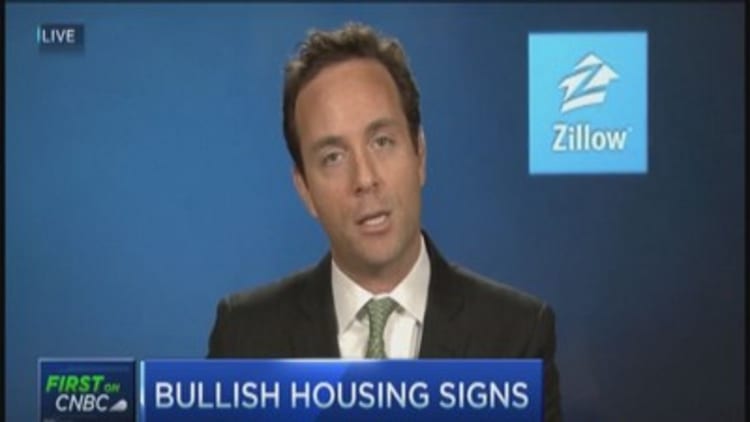
First came a historic national crash in home prices, then a surprisingly sharp jolt off the bottom. Investors, desperate for yield and fueled by Fed-induced cheap cash, swarmed the most distressed housing markets, buying bargain-basement properties and turning them into rentals. Some markets saw double-digit annual price appreciation. Some analysts started to float the word "bubble," again.
Now, finally, reality is setting in yet again.
Foreclosures have fallen to new lows since the crisis, and investors, while not selling their homes, are not buying nearly as many. That has taken much of the air out of home prices. In addition, the number of homes for sale is rising, pushing sellers from the driver's seat to the way, way back.
"What a difference a year makes," said Stan Humphries, chief economist at Zillow. "At this time last year, we were worrying about a number of frothy markets that looked like they could be on the edge of another housing bubble, places where homes were appreciating at more than 20 percent per year and where buyers' heads were spinning just trying to keep up."
Now those markets, while not in the red, are barely in the black. Los Angeles, for example, saw home prices rise over 18 percent in the third quarter of 2013 from the same time in 2012. Now its annual appreciation for the quarter is down to 8 percent, according to Zillow.
"Buyers don't have the same sense of urgency as they did before. They can be a little bit more discerning," said Greg Bender, a Los Angeles-area Realtor with Berkshire Hathaway HomeServices.
Read MoreLos Angeles housing market loses star status
Bender is seeing homes sit on the market far longer than they did just six months ago. It is no longer a seller's market.
In Phoenix, hard hit by the housing crash and a favorite among investors in 2012 and 2013, the price deflation is even more dramatic. Last year, prices were up 18 percent annually at this time. Today they are up barely 1 percent. Demand and supply are low.
"Most of the median-price increase over the last 12 months is because a greater percentage of the homes being sold are in the luxury market, not because home values overall are increasing," Arizona State University's Mike Orr wrote in a recent report. "We anticipate pricing will move sideways or slightly down over the next few months until supply and demand get back into balance."
While most housing analysts do not expect home prices to go negative on a national level again, some have floated that possibility. Home prices soared from 2003 to 2007 due to cheap and easy credit. When that went away, prices plummeted nationally for the first time in history.
Read MoreHome prices headed for a triple dip
Prices soared again between 2011 and 2013 due to the Federal Reserve's intervention; it bought billions of dollars worth of mortgage-backed bonds and pushed the average rate on the 30-year fixed to a record low. That pulled buyer demand forward, providing investors with cheap cash to buy foreclosures. Some argue that as that demand goes away, housing will pay a price again.
"If stimulus 'hangovers' are proportional to the amount of stimulus that preceded them, then this one could be a doozy," wrote Mark Hanson, a housing analyst in California.
Read MoreSlump in mortgage rates fails to rally home buyers
So far, the biggest changes in price appreciation are in the so-called "sand states," where markets heated the most during the housing boom and had the highest rates of foreclosure during the crash. Markets where the housing recovery was slower and the crash less dramatic have seen better price gains in the past year than in the previous year. These include Chicago, Philadelphia and Atlanta. The latter, however, bears watching, as it became a new favorite this year among investors.
"Home values should continue to grow, but that growth will increasingly be driven by traditional market fundamentals like household formation and job growth, and less by artificial stimulants like decreased supply and widespread investor demand," said Zillow's Humphries.


